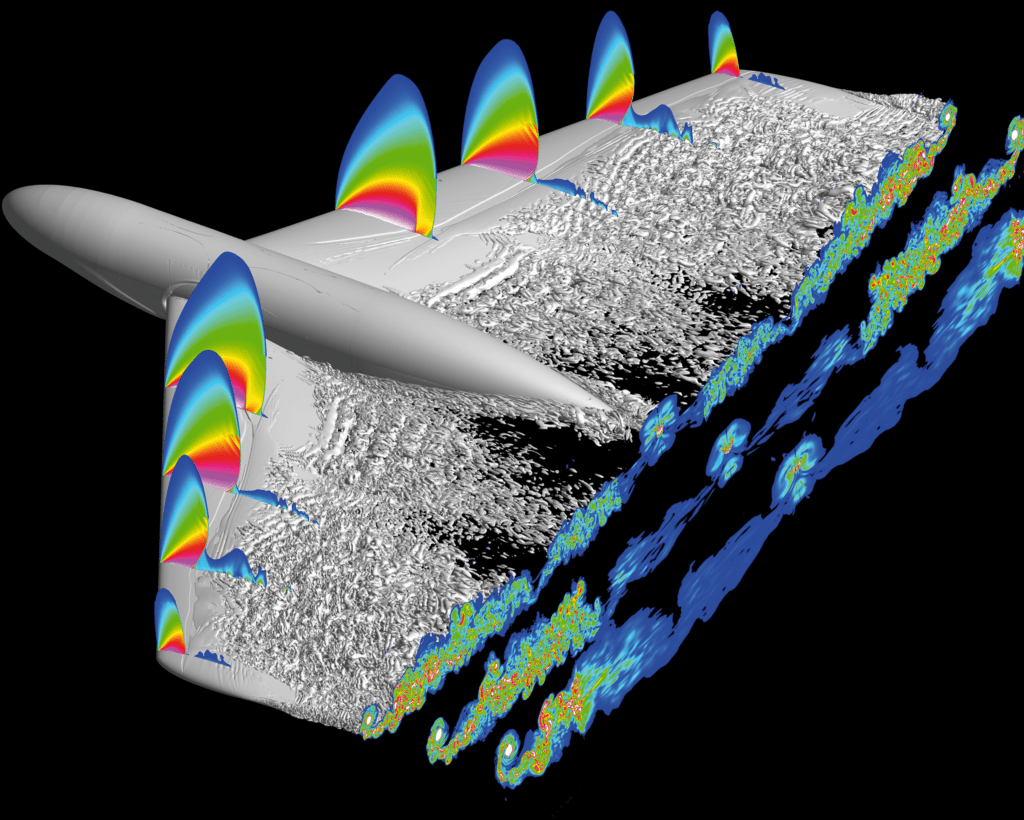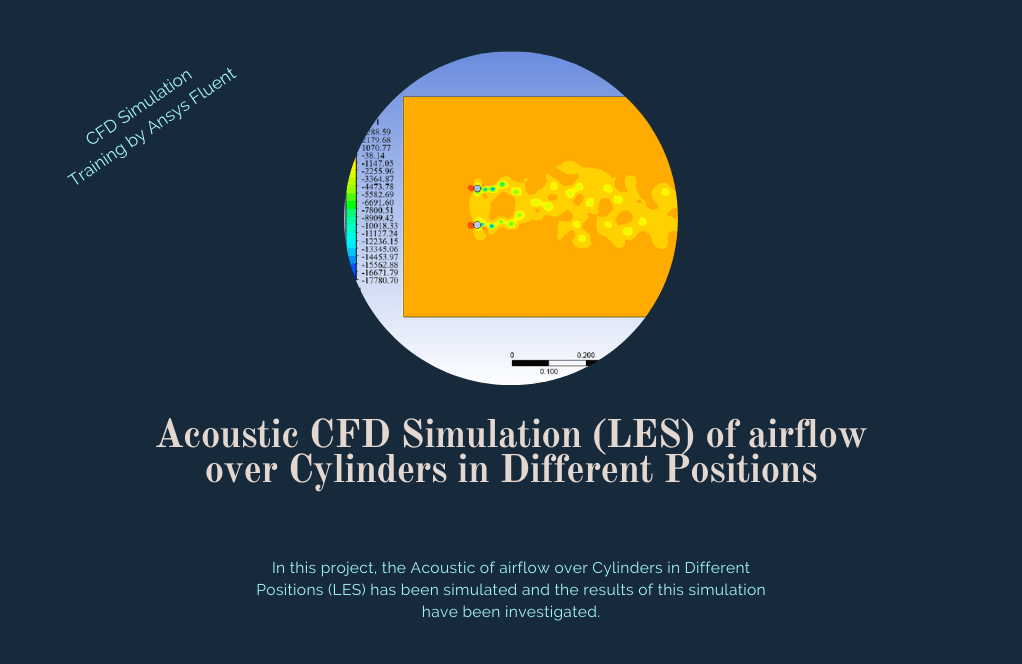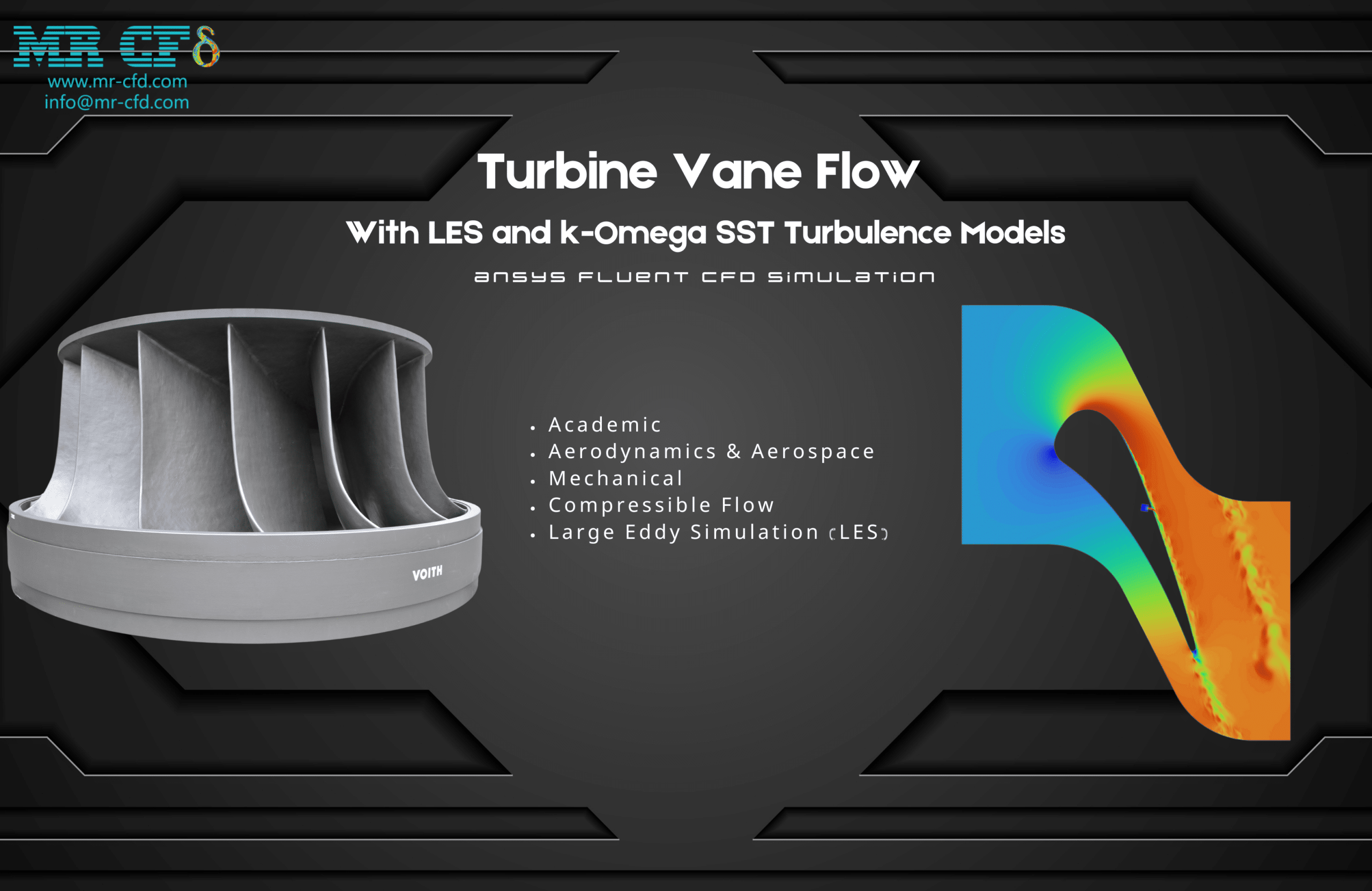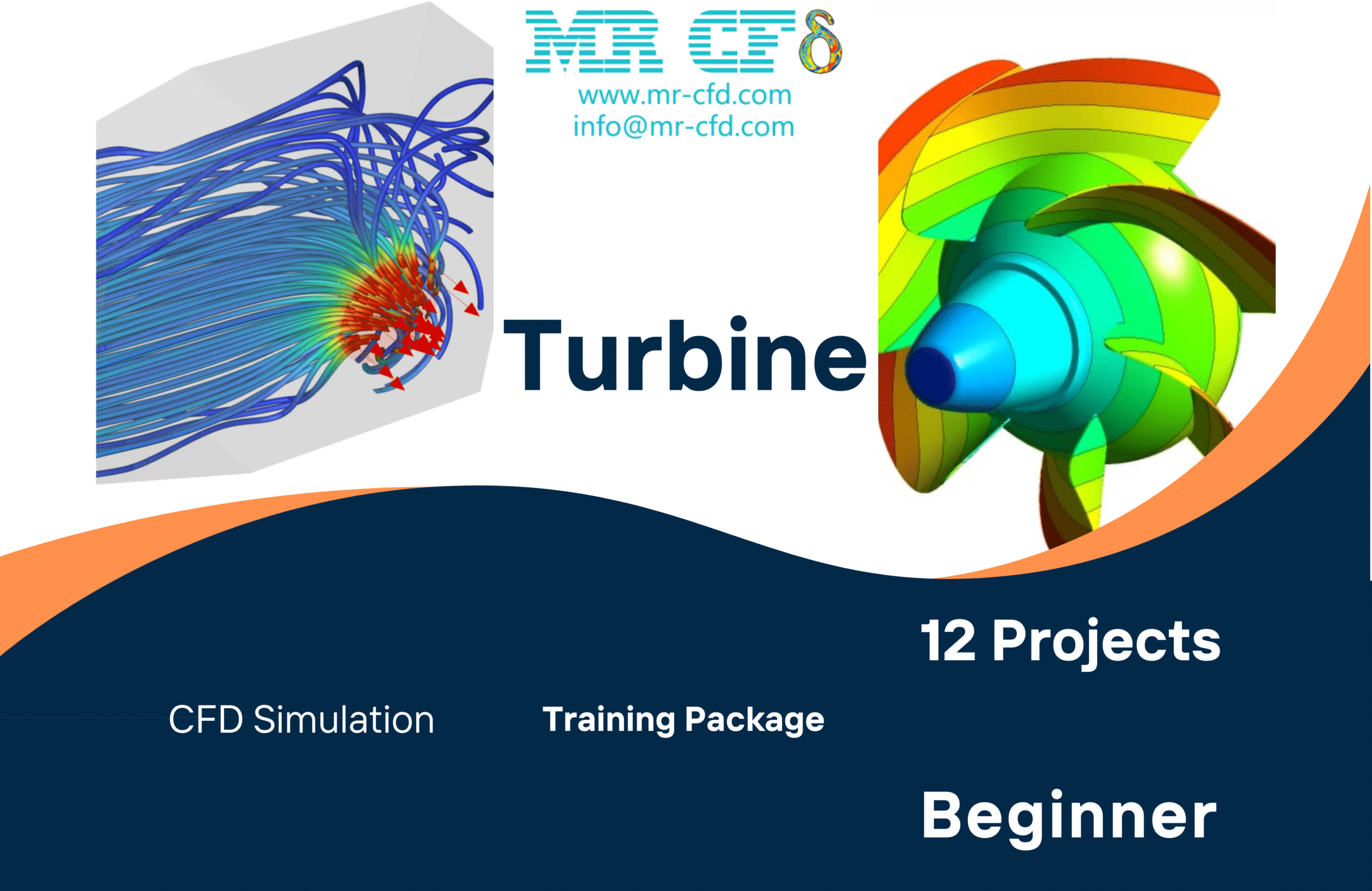CFD Project Outsourcing
Outsource your CFD project to the MR CFD simulation engineering team. Our experts are ready to carry out every CFD project in all related engineering fields. Our services include industrial and academic purposes, considering the ANSYS Fluent software's wide range of CFD simulations. By outsourcing your project, you can benefit from MR CFD's primary services, including CFD Consultant, CFD Training, and CFD Simulation.
The project freelancing procedure is as follows:
An official contract will be set based on your project description and details.
As we start your project, you will have access to our Portal to track its progress.
You will receive the project's resource files after you confirm the final report.
Finally, you will receive a comprehensive training video and technical support.
What is the Large Eddy Simulation (LES)?
Large-eddy simulation (LES) is a mathematical model for turbulence used in computational fluid dynamics. It was initially proposed in 1963 by Joseph Smagorinsky to simulate atmospheric air currents. In most industrial applications, fluid flow is turbulent, and in other words, flow velocity magnitude and direction fluctuate during time. There are three models for investigating turbulence effects. Direct numerical simulation (DNS) in DNS: no modeling required. DNS solving is impractical for simulating industrial work, and Reynold’s number is very high.
The computational cost of DNS is related to the cube of the Reynolds number. The computational price of this model is very high and is not proposed for industrial work. Needs an increased number of elements and consequences, high-performance CPU (HPC), and RAM. In applications that detail fluid flow and eddies are essential, we must use DNS. Another method is Reynolds Average Naiver Stokes (RANS). Using this method, we find the effect of turbulence and eddies; in other words, we will find the Reynolds stress magnitude and turbulence viscous. The computational cost of this model is lower than DNS and can be simulated in a steady state.
There is another model that can be solved in some industrial work. We should know more about eddies and vortexes. This model is used for finding significant eddy behavior. Large eddies transfer most passive scalar, mass, and momentum. Necessary eddy behavior is more related to particular problems, geometry, and boundary conditions than exceptional work, but minor eddy behavior is more universal. So, we can simulate small eddies by various models such as the RANS model (k-epsilon, k-omega, and so on).
When we simulate the LES model, we should use the transient model and finer mesh compared to RANS models such as K-omega and k-epsilon. Also, we should use a smaller mesh size, and consequently, the number of mesh is higher. So, the total computational cost is high, and we need a high-performance computer. However, the computational price of this model is lower than DNS.
In the study of fluid dynamics, turbulence is simulated using a mathematical model known as the Large Eddy Simulation (LES). It was created to address the shortcomings of prior turbulence models. While the smaller-scale motions in LES are represented, the large-scale turbulent motions (called “eddies”) are directly resolved in the simulation. This contrasts Reynolds-averaged Navier-Stokes (RANS) models and Direct Numerical Simulation (DNS), which resolve and model all turbulence scales, respectively.
– LES: Models small-scale motions and resolves large-scale motions
– DNS: Resolves all motion scales
– RANS: Models motions at all scales
Between DNS and RANS, LES represents a compromise. Because it can resolve large-scale motions, which are more impacted by the flow geometry and boundary conditions, it is more accurate than RANS. Because it is not required to resolve the tiniest scales of turbulence, it is also less computationally intensive than DNS.
How can Large Eddy Simulation (LES) CFD simulation be applied in Engineering?
By eliminating the small-scale turbulent structures, the Large Eddy Simulation (LES) mathematical model is used in computational fluid dynamics (CFD) to simulate turbulence. It can be used in several engineering specialties, including civil, mechanical, aerospace, and environmental engineering. Here are several examples:
– Aerospace Engineering: Using LES to evaluate the flow across aircraft wings can create more effective wing designs. It can also be used to research how jet engines burn fuel.
- Examining the flow across an airplane’s wings
- Researching the combustion process in jet engines
– Mechanical engineering: It can be used to analyze how fluids move through pipes and other systems, which can be useful for creating more effective systems.
- Investigating fluid flow in systems and pipes
– Civil engineering: LES can be used to model wind loads on buildings and structures, aiding in constructing strong wind-resistant buildings.
- Simulating wind loads on buildings and other structures in civil engineering
– Environmental engineering: Environmental engineering is a field that studies how pollutants are dispersed in the air and water.
- Investigating the spread of pollutants in the air or bodies of water
The fundamental benefit of LES in all of these applications is its ability to produce more precise and thorough findings than alternative turbulence models, particularly for complicated flows with large spatial and temporal variability. But it also necessitates greater computational power.
– Offers more precise and thorough results
– Appropriate for complicated flows with considerable temporal and geographical variability
Negative aspects:
– Demands more computational resources
MR CFD services in the Large Eddy Simulation (LES) Simulation for Engineering and Industries
With several years of experience simulating various problems in various CFD fields using ANSYS Fluent software, the MR CFD team is ready to offer extensive modeling, meshing, and simulation services. Simulation Services for Large Eddy Simulation (LES) CFD simulations are categorized as follows:
- CFD Simulation of high-Mach airflow over aerial structures
- CFD Simulation of fire spread and combustion using the LES method
- Application of the LES method in building simulations, including pedestrian-level wind comfort, near-field pollutant dispersion, urban thermal environment, natural ventilation of buildings, and indoor airflow
A Large Eddy Simulation (LES) mathematical model is applied in fluid dynamics simulations. While the smaller-scale turbulent characteristics are represented, they directly resolve large-scale turbulent flow features (eddies). Particularly for complex flows and geometries, this method can produce more precise and comprehensive results than those from other turbulence models.
LES has a wide range of applications in the engineering and industrial contexts:
– Aerospace and automotive industries: LES can be used to evaluate and simulate turbulent flow over vehicles or airplanes, which can aid in designing them more aerodynamically.
– Energy Industry: Whereas a grasp of turbulent flow is essential, LES can be used in the design and study of turbines, wind farms, and other energy-related equipment.
– Environmental Engineering: LES can be used to model and research environmental flows, such as the dispersion of contaminants in the air or water.
– Process Engineering: Turbulent flow processes, such as mixing, combustion, etc., can be optimized and simulated using LES.
Large Eddy Simulation (LES) in ANSYS Fluent
Please note that the procedures may change significantly based on your ANSYS Fluent version.
– Launch ANSYS Fluent
Activate the ANSYS Fluent module. Open the ANSYS Workbench and drag the Fluent module into the Project Schematic.
– Upload Your Mesh
Bring in the model’s mesh. You may select File > Import > Mesh, your mesh file, and OK.
– Configure the Solver
Access Solver by going to Define > Models. Choose Transient in the Time field. Choose 3D in the Space field. Select OK.
– Create the viscous model
Select Define > Models > Viscous from the menu. Choose LES in the Model field. You can alter the choices for the LES Model, Subgrid Scale Model, and Near-Wall Treatment according to your particular requirements. Select OK.
– Establish the Boundary Requirements
To define boundary conditions, select Define. Create the boundary conditions according to what your particular model requires. Depending on what you are modeling, this will change significantly.
– Start the Solution from scratch
Initialize by going to Solution > Initialize > Initialize. Click Init after selecting Standard Initialization.
– Execute the Algorithm
Navigate to Solution > Calculate. Enter the time step size and the number of time steps you want to run. To calculate, click.
– Examine the Findings
You can examine the findings after the calculation is finished. To examine the simulation’s plots and animations, go to Results > Graphics and Animations.
Please keep in mind to constantly save your project. Additionally, LES simulations can consume many resources, so make sure your computer has enough memory and computing power to run the simulation.
Large Eddy Simulation (LES) MR CFD Projects
Here is a quick summary and a few possible project ideas:
– LES of Turbulent Flow in a Pipe: The LES model simulates and examines a pipe’s turbulent flow. You can look into how the flow evolves and transforms under various circumstances.
– Utilize the LES model to simulate a reaction flow in a combustion chamber: This might make comprehending how combustion processes behave easier.
– LES for Simulating Multiphase Flow in a Mixer: LES is used to model the multiphase flow in a mixer. You can research mixing effectiveness and the impact of various operating circumstances.
– LES of Flow over a Car: This project might entail utilizing the LES model to simulate the flow over a car. This can be used to investigate and suggest ways to reduce aerodynamic drag.
– LES of Flow in a Wind Turbine: LES models the flow inside a wind turbine. This can aid in maximizing the efficiency of the turbine design.
Remember that the success of these studies depends on your ability to comprehend LES, MR CFD, and the particular system you are researching. Additionally, you’ll require access to reliable computational tools.
Acoustic over Cylinders in 4 Different Positions with LES
ANSYS Fluent software was used in this research to model the airflow Acoustics over Cylinders in Different Positions (LES) and analyze the simulation results. We carry out this CFD project and do a CFD analysis to look at it.
The study of mechanical waves, such as sound, vibration, ultrasound, and infrasound, in gases, liquids, and solids is the subject of acoustics. It relates to sound effects, transmission, control, creation, and reception.
Two-dimensional contours relating to the pressure at various configurations are obtained after the solution process. Charts of the sound pressure levels at various positions in geometry are shown.
Compressible Flow around an Aerial Structure by LES
The issue simulates compressible flow over an aerial structure using ANSYS Fluent software. In this computational area, the airflow moves horizontally at atmospheric pressure, 300 K temperature, Mach number 5, and Mach number. Two-dimensional contours relating to pressure, velocity, temperature, density, and Mach number are obtained after the solution.
The findings demonstrate the compressibility of the airflow surrounding the aerial construction; the density of the airflow changes dramatically around the air body. This is due to changes in pressure and velocity in the areas around the airspace.
Large Eddy Simulation (LES) Application in Industrial Companies
The Large Eddy Simulation (LES) mathematical model is used in computational fluid dynamics to simulate turbulence by eliminating the small-scale turbulent motions. Numerous industrial fields have found widespread use for this method. Some of the main applications are listed below:
Aviation Industry
LES is widely employed in the aerospace sector for aircraft design and testing. Understanding airflow around an aircraft helps strengthen aerodynamics, lower drag, and increase fuel efficiency.
– Aerodynamics Optimization: By simulating the airflow surrounding the aircraft, LES aids in optimizing the aerodynamic characteristics of an aircraft.
– Fuel economy: LES can help increase an aircraft’s fuel economy by lowering drag.
Vehicle Industry
LES is used in the automobile sector to build safer and more efficient vehicles. It may mimic the airflow surrounding a car, which can be utilized to reduce drag and increase fuel economy.
– Vehicle Design: LES can aid in creating aerodynamically superior automobiles that will perform better and use less fuel.
– Safety: LES can also be used to simulate how wind forces will affect a vehicle, which can help to increase the vehicle’s safety.
Energy Industry
LES is also applied to the energy industry, particularly wind power. It can simulate the airflow around wind turbines, allowing for the design and installation of those structures to be optimized for optimal energy production.
– Wind Turbine Design: By modeling the airflow around wind turbines, LES can assist in the design of more effective wind turbines.
– Wind Farm Layout: LES can also pinpoint where the wind turbines should be located in a wind farm to maximize energy production.
Production Industry
In the manufacturing sector, LES can simulate fluid flow in pipes and other equipment, optimizing the design and performance of these systems.
– Fluid Flow Simulation: LES can improve these components’ design and performance by simulating the fluid flow in pipelines and equipment.
– Heat Transfer: The efficiency of various manufacturing processes can be increased using LES to simulate heat transfer.
In conclusion, LES is a strong tool with numerous applications across various industrial industries. It is crucial for enhancing the design and performance of a wide range of systems due to its capacity to replicate turbulent flows precisely.
MR CFD Industrial Experience in the Large Eddy Simulation (LES) Field
Some examples of Large Eddy Simulation (LES) industrial projects recently simulated and analyzed by MR CFD in cooperation with related companies are visible on the MR CFD website.
You may find the Learning Products in the Large Eddy Simulation (LES) CFD simulation category in the Training Shop. You can also benefit from the Large Eddy Simulation (LES) Training Package, which is appropriate for Beginners, Intermediate, and Advanced users of ANSYS Fluent. Also, MR CFD is presenting the most comprehensive Large Eddy Simulation (LES) Training Course for all ANSYS Fluent users from Beginner to Experts.
Our services are not limited to the mentioned subjects. The MR CFD is ready to undertake different and challenging projects in the Large Eddy Simulation (LES) modeling field ordered by our customers. We even carry out CFD simulations for any abstract or concept Design you have to turn them into reality and even help you reach the best strategy for what you may have imagined. You can benefit from MR CFD expert Consultation for free and then Outsource your Industrial and Academic CFD project to be simulated and trained.
By outsourcing your Project to MR CFD as a CFD simulation consultant, you will not only receive the related Project’s resource files (Geometry, Mesh, Case, and Data, etc.), but you will also be provided with an extensive tutorial video demonstrating how you can create the geometry, mesh, and define the needed settings (preprocessing, processing, and postprocessing) in the ANSYS Fluent software. Additionally, post-technical support is available to clarify issues and ambiguities.








